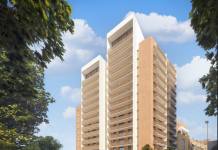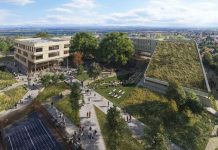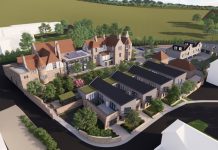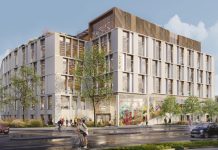The proposed £100 million sports and conference centre beside Ashton Gate Stadium will bring a new dimension to Bristol, according to the destination consultant who advised on the scheme.
“Bristol and the South West region presently lack a decent sized, flexible indoor arena venue. This development will meet that need by providing capacity for 4,000 and, crucially, operating across sports, conferencing, exhibitions, entertainment and hospitality.” said Matt Hyslop of real estate services company Colliers International.
“This will bring a new dimension to Bristol by attracting big conferences and events that presently cannot be held in the city, and will boost the local economy.”
Mr Hyslop, who also provided consultancy advice on artificial surf destination The Wave in Bristol, added: “We know from our consultancy work at The Wave that people are attracted to experiential destinations. This scheme will create an events-led and programme-led cluster around Ashton Gate Stadium, which will appeal to a wide audience.”
Updated plans for the scheme were released recently, and show a £100 million sports and conference centre at Ashton Gate featuring a 4,000-capacity indoor venue, a 230-bedroom four-star hotel, a 30,000 sq ft office building, a 550-space car park and a 165-unit residential development, plus a museum.
The new sports and convention centre would become the permanent home of the Bristol Flyers basketball team, and could also host other indoor sports, as well as live music and theatre.
Ashton Gate Stadium is already home to Bristol City Football Club, and the Bristol Bears rugby team. The two clubs, together with Bristol Flyers, are part of Bristol Sport which has as its majority shareholder Steve Lansdown, co-founder of financial services firm Hargreaves Lansdown.
Mr Hyslop said that one of the advantages of the proposed new venue next to Ashton Gate Stadium would the variety offered by size and type of event.
“Ashton Gate currently provides a high-quality all-seater stadium and hospitality up to 1,000 capacity dinners. A new, flexible arena style venue will provide a regional scale market offer for events of 2,000 to 4.000 people,” he said.
“There is a real place in the market at this scale, which is below that of national scale arenas operating at capacities of 10,000 to 20,000 capacities. With flexibility across different event types and uses, this makes good economic sense.
“The fact that the venue will have a quality hotel offer beside it adds further to the attraction of this scheme, and creates a genuine event-led destination cluster. This reflects a well-established trend for delivering hotels next to stadia and sports venues”.



















